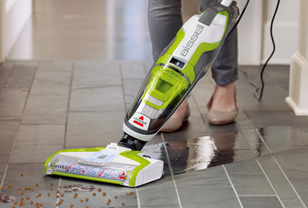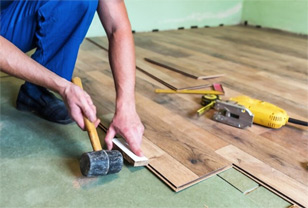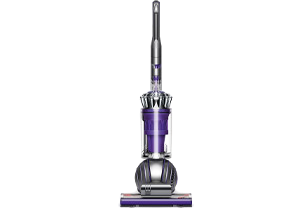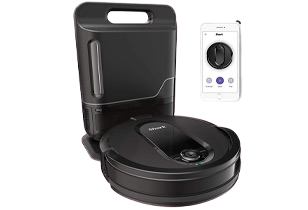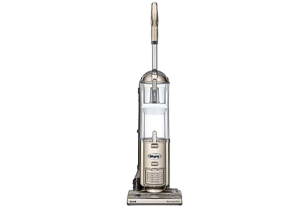How to Clean a Roomba That Ran Over Poop: Step-by-Step Instructions
One day you may return home from a long day at work, expecting to find your floors sparkling clean, all thanks to your trusted Roomba. Instead, you're greeted by the sight—and smell—of a catastrophic mess. Your pet, it seems, has had an unfortunate accident.
This tutorial will show you how to clean a Roomba that ran over poop and restore your robot to its previous condition.
Potential Consequences if Your Room Isn't Not Cleaned Properly
Addressing this unsightly mess can be a daunting task. However, it's critical to clean your Roomba properly after it has encountered feces.
The risk of leaving any residue within the unit isn't merely a matter of unpleasant odors. Even advanced models like the iRobot Roomba 960 can still encounter a messy situation when it runs over poop.
Left unattended, the fecal matter can seep into the device's internal components, damaging its sensors and mechanisms. Roombas rely heavily on these sensors for navigation and cleaning, and any impairment can significantly hamper their performance.
On top of that, if fecal matter remains within the dustbin or on the brushes, it can breed harmful bacteria and pose a risk to you and your family's health.
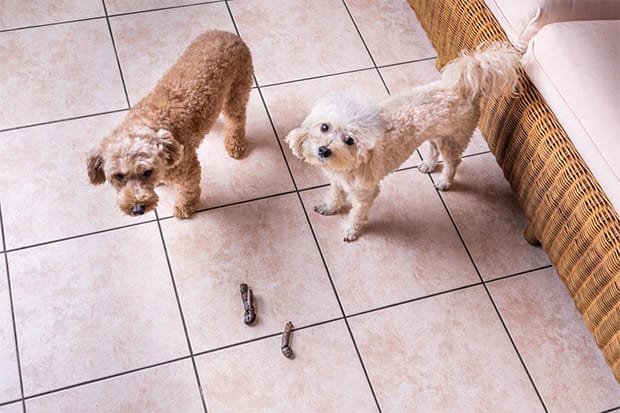
Your robot vacuum may encounter situations beyond its intended design capabilities
Failing to thoroughly clean your Roomba after it's run over poop can also lead to the spread of unsightly stains and odors the next time it's put to use. This can turn your reliable cleaning assistant into an agent of mess-making and undo its primary function.
In worst-case scenarios, the feces could lead to irreparable damage, requiring replacement parts or even a new Roomba.
That is why Similarly, owners of models like the iRobot Roomba E5 must also be prepared to handle such a crisis.
What You'll Need
Here's a checklist of the cleaning tools and supplies you'll need:
- Soft cloth: To wipe down the outer casing of the Roomba. A microfiber cloth is ideal as it won't scratch the surface.
- Mild cleaning solution: You'll need this to clean the outer casing and some components. Avoid any abrasive or harsh cleaners as they can damage the Roomba.
- Small brushes: These can be used to remove dirt and debris from small spaces. An old toothbrush can work well for this.
- Cotton swabs or Q-tips: Perfect for cleaning the sensors and getting into small nooks and crannies.
- Paper towels: For drying components after cleaning.
- Replacement parts (optional): Depending on the condition of your Roomba's brushes, wheels, or filters, you might need to replace them.
How to Clean a Roomba That Ran Over Poop
Turn Off and Unplug the Roomba
The first step in cleaning your Roomba that's run over poop is to turn off and unplug the device.
This is crucial to ensure your safety, as well as prevent any further spreading of the mess or damage to the Roomba's electrical components. Operating on a device that has come into contact with fecal matter poses a risk of electrical shocks and should be avoided.
- Press the "Clean" button on your Roomba to power it off. The button's light should go off, indicating that the device is no longer active.
- If your Roomba model is a rechargeable one and has a battery installed, remove the battery to prevent any inadvertent operation during the cleaning process. The battery can usually be found at the bottom of the Roomba.
Tip: Always handle your Roomba with clean, dry hands when turning off and unplugging the device.
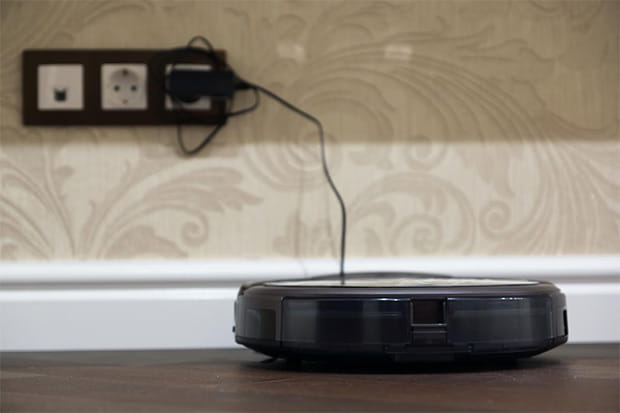
Always turn off and unplug the vacuum before initiating the cleaning process
Remove the Robot's Components
Next, you'll need to disassemble the Roomba.
By doing so, you can ensure a thorough cleaning of each component and effectively remove any fecal residue that may have worked its way into different parts of the device. This also allows you to inspect each part for any damage or faults that might have occurred as a result of the incident.
Warning: When disassembling your Roomba, remember to keep track of all screws and components. Losing any of these could make reassembly difficult or prevent the Roomba from functioning properly.
Side Brushes
To remove the side brushes, you'll need a small screwdriver.
- Flip your Roomba upside down to locate the side brushes.
- You'll see a single screw in the center of each brush. Remove this using your screwdriver.
- Once the screw is removed, you can lift the brush straight off the Roomba.
Back Cover
The back cover, or bottom cover, is typically secured with several screws.
- Locate these screws on the underside of your Roomba and remove them using a screwdriver.
- Once the screws are removed, you should be able to lift the cover off.
Wheels
The caster wheel and the drive wheels can also be removed for cleaning.
- The caster wheel (the single wheel at the front) can usually be pulled straight out of its socket.
- The drive wheels (the two larger wheels at the sides) may require a little more effort to remove. Depending on your Roomba model, there may be retaining clips or screws that you need to undo before you can remove the wheels.
Dust Bin
The dust bin should be removed and emptied.
- Find the release tab on the back or top of your Roomba.
- Press the tab and pull out the dust bin.
Brush Roll
The brush roll is located at the bottom of your Roomba.
- To remove it, you may need to unclip or unscrew the brush roll cover, depending on your model.
- Once the cover is removed, you can lift the brush roll straight out of its housing.
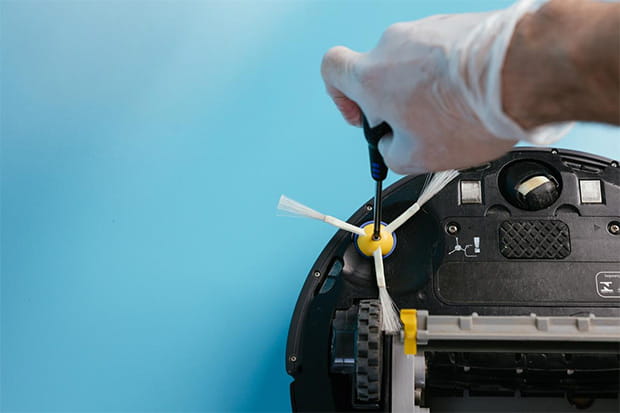
Disassembling your vacuum makes it easier to access and clean all components
Clean the Exterior of the Roomba
Now that the Roomba is disassembled, you can start the cleaning process with the exterior of the robot.
The goal is to remove as much fecal matter as possible to prevent the spread of bacteria and ensure a thorough cleaning. This helps to prevent cross-contamination when handling internal components later on.
- Use disinfecting wipes to clean the exterior of the Roomba. Wipe down all surfaces thoroughly, paying particular attention to any areas with visible fecal residue.
- For crevices or tight spots, a toothpick or a small brush can be useful. Dip these tools in a mixture of warm water and mild soap, then use them to reach and clean difficult areas.
Tip: It's a good idea to wear disposable gloves during this process to protect your hands.
Clean the Wheels
The wheels of your Roomba, both the drive wheels and the caster wheel, can be a magnet for fecal matter due to their direct contact with the floor.
- Remove any visible chunks of feces using a disposable cloth or paper towel.
- For each wheel, use a cloth or an old toothbrush dipped in warm soapy water to scrub the surface and the inside of the wheel well. Pay particular attention to the treads of the drive wheels, as debris can get trapped there.
- After scrubbing, rinse each wheel under warm running water. Make sure to rinse away all soapy residue.
Warning: Never submerge the wheels in water. This can cause damage to the internal parts of the wheels.
Clean the Brushes and Bristle Extractors
The brushes and bristle extractors of your Roomba play a vital role in the cleaning function of the robot. If these parts have come into contact with feces, you must clean them thoroughly to maintain their function and prevent the spread of bacteria.
- Remove any trapped hair or debris from the bristles of the brushes and bristle extractors using a pair of tweezers or a brush cleaning tool.
- Dip a cloth or an old toothbrush in warm soapy water, and scrub each brush and bristle extractor thoroughly, paying special attention to the bristles.
- Rinely each brush and bristle extractor under warm running water, ensuring all soapy residue is washed off.
Tip: Consider replacing your brushes if they've come into contact with feces. This is the most hygienic option, especially if your Roomba frequently cleans areas where you or your family members may be sitting or lying down.
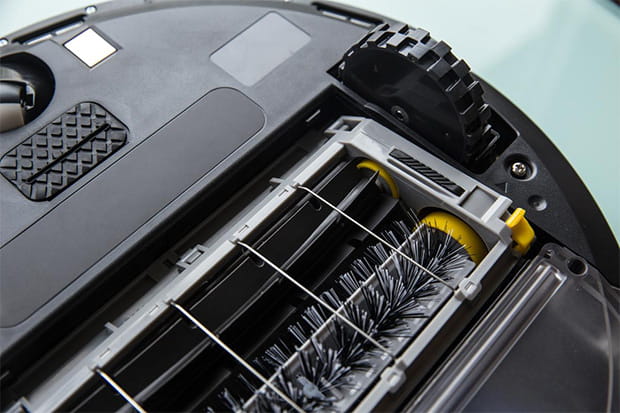
Thoroughly clean each part to ensure optimal performance
Clean the Dustbin and Filter
The dustbin and filter hold the collected debris, and if your Roomba has run over feces, these components likely need a thorough cleaning.
- Empty the dustbin into a garbage bag, ensuring to remove any visible debris.
- Wipe the inside of the dustbin with a cloth or a sponge soaked in warm soapy water. Make sure to clean all corners and under the rubber flaps where debris might hide.
- Rinse the dustbin thoroughly under warm running water to remove all soapy residue.
- The filter can be tapped gently over a garbage bag to dislodge any loose debris. However, do not use water to clean the filter as this can damage it.
Tip: Consider replacing the filter if your Roomba has encountered feces. This can help ensure the best air quality when the robot is in use.
Address Any Remaining Residue on the Roomba
Before you reassemble the Roomba, it's crucial to perform a final clean to ensure there is no remaining residue on the robot. The last thing you want is to overlook any stubborn remnants of fecal matter.
- Inspect all areas of the Roomba carefully, both inside and out. Look out for any overlooked spots that might still have fecal residue.
- If you find any remaining residue, use a disinfecting wipe or a cloth dipped in warm soapy water to clean the area. A toothbrush or a cotton swab can be used for any small crevices.
- After you've ensured that the Roomba is clean, leave all parts to dry thoroughly before reassembling. This can prevent any potential issues with moisture damaging the robot's internal components.
Warning: Ensure that all parts of the Roomba are completely dry before reassembly. Any remaining moisture can cause damage to the electrical components of the robot.
Reassemble the Robot and Perform a Test Run
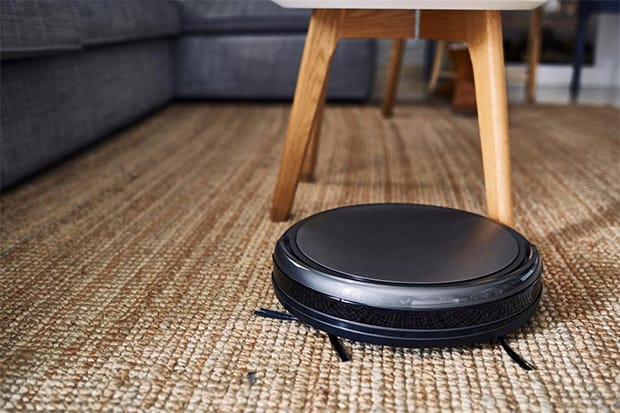
Reassemble the parts correctly and conduct a final test run to confirm functionality
With the Roomba now cleaned and dried, it's time to put it back together. Make sure all parts are securely in place before the robot's next use.
- Follow your Roomba's user manual to correctly reassemble the robot. Ensure that all components, including the wheels, brushes, and dustbin, are correctly installed.
- Once reassembled, perform a test run of the Roomba in a clean area to ensure it is functioning correctly.
When to Seek Professional Assistance
Even with meticulous cleaning, there may be instances where professional help becomes necessary.
This can depend on various factors, including the extent of the contamination, your comfort level with cleaning the robot, or concerns about potentially damaging your Roomba during the cleaning process.
Here are a few circumstances where reaching out to a professional might be the best course of action:
Persistent Foul Odor
Despite your best cleaning efforts, if a foul odor persists, it could mean there's still residue hidden in areas that are hard to reach or clean. A professional cleaner has the necessary tools and expertise to thoroughly clean these areas.
Roomba Functionality Issues
If your Roomba is not performing as it should post-cleaning, it might be due to some internal components being affected during the incident. Professionals can disassemble the robot more thoroughly and identify and correct these issues.
Preventing Damage to the Roomba
If you're unsure about disassembling and cleaning your Roomba, professional help can be a good option.
Without proper care, there's a risk of damaging the Roomba during the cleaning process. Professionals are trained to handle such cleaning without causing any harm to the robot.
Health Concerns
If you are uncomfortable or concerned about cleaning up feces due to the potential for harmful bacteria or pathogens, a professional cleaning service is the best way to go.
Additional Tips for Maintaining Your Roomba
Regularly Empty the Dustbin
The Roomba works best when its dustbin is not full. While it's equipped with a sensor that alerts you when the dustbin is getting full, it's a good practice to empty it after every cleaning session, regardless of whether you get an alert or not.
This ensures optimal performance and extends the lifespan of the robot. Besides, emptying the dustbin regularly also helps in maintaining a higher standard of cleanliness in your home.
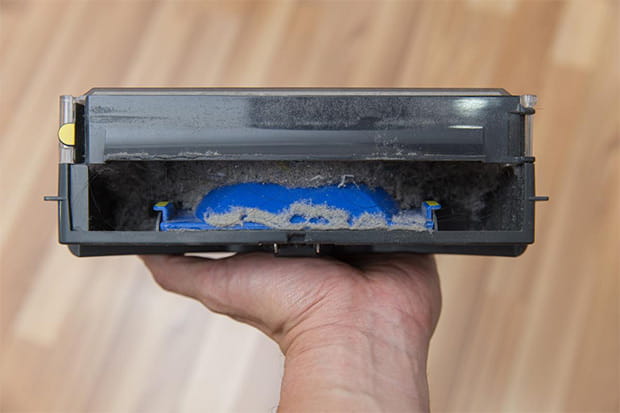
Empty the dust bin regularly to maintain efficiency
Inspect and Clean Brushes and Wheels
Keep an eye on the condition of the Roomba's brushes and wheels. Over time, hair and other debris can get tangled in these components and cause them to underperform.
Regularly inspect and clean them to ensure the Roomba can effectively pick up dirt and navigate your space. If these parts seem worn out, consider replacing them to keep your Roomba working in top-notch condition.
Keep Sensors Clean
Roomba relies on various sensors to navigate around your home. These include cliff sensors to avoid falling down stairs, optical and acoustic sensors to detect dirt, and a full bin sensor to alert when it's time to empty the bin.
Keep these sensors clean to ensure the Roomba works correctly. A soft, lightly dampened cloth should be enough for the job.
Regularly Update Roomba's Software
Just like your smartphone, your Roomba also gets regular software updates from its manufacturer.
These updates often come with improvements and bug fixes that enhance the performance of your Roomba. Make sure your Roomba is connected to your home Wi-Fi network to receive these updates automatically.
Keep your Roomba's software up-to-date for the best performance and features.
Schedule Regular Cleaning Sessions
Roomba works best when used regularly. Not only does this help maintain a clean home, but it also prevents the build-up of dirt and dust within the Roomba itself.
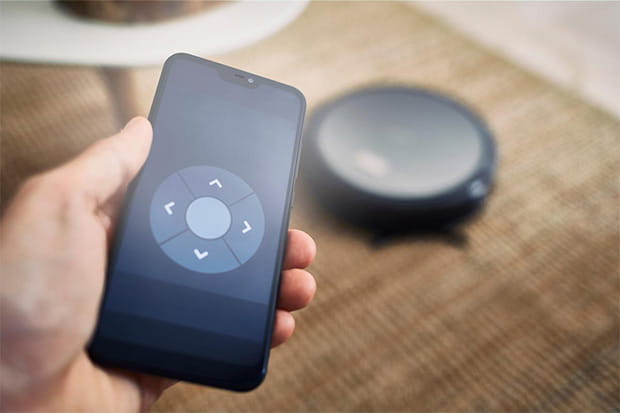
Schedule regular cleaning sessions depending on the cleanliness level of your house and the area to be cleaned
Conclusion
Knowing how to clean a Roomba that ran over poop can help you deal with this challenge and put your Roomba back in action in no time. This is undeniably an intricate process. But with careful attention to detail and patience, you can restore your robot vacuum to its pristine state.
FREQUENTLY ASKED QUESTIONS
- 01. How Often Should I Clean My Roomba??
-
This depends on the usage. For regular usage, iRobot, the maker of Roomba, recommends cleaning the brushes and filter once a week and the front caster wheel every two weeks. If you use the Roomba more intensively, more frequent cleaning may be required.
- 02. What Should I Do if My Roomba Still Smells After Cleaning It??
-
If your Roomba still smells after cleaning, there might be some residual waste in a hard-to-reach area. If this happens, consider seeking professional help for a more thorough cleaning.
- 03. Can I Prevent My Roomba From Entering Rooms Where My Pet Might Make a Mess??
-
Yes, Roomba offers virtual wall barriers that can block off certain areas. You can set these up to prevent your Roomba from going into areas where your pet may have accidents.
- 04. Is It Safe to Clean the Roomba's Components With Water??
-
Yes, some components of the Roomba can be cleaned with water. However, make sure they are thoroughly dry before reassembling the robot. Never submerge electronic components or the entire robot in water.
- 05. Can I Use a Roomba if I Have Pets That Sometimes Make Messes on the Floor??
-
You should always check the floor for pet messes before running your Roomba. A Roomba can handle pet hair well, but pet waste can damage the robot and require extensive cleaning.





